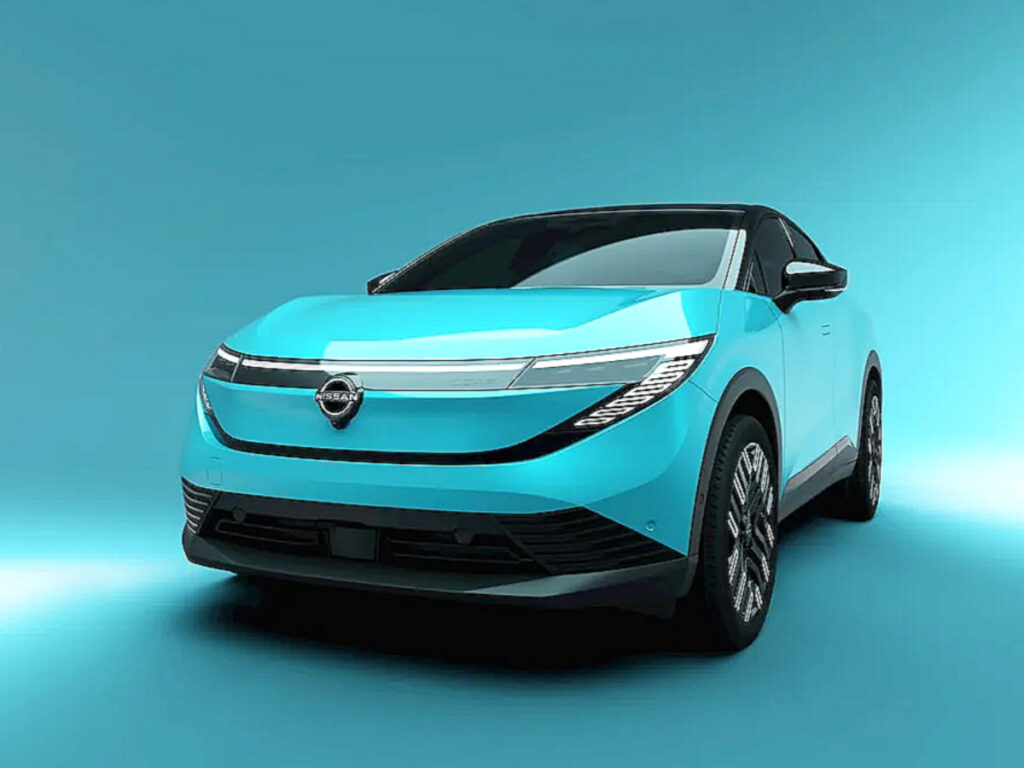
Nissan’s first mass-market EV is getting a full-scale reboot. The all-new, third-generation Leaf has been unveiled—no longer a compact hatchback, but a fully redesigned compact SUV built on the automaker’s CMF-EV platform.
Set to enter production in early 2025, the next-gen Leaf features updated styling, extended range, and a bold repositioning strategy aimed squarely at the evolving global EV market. The transformation underscores Nissan’s renewed push to reassert its position in the electric vehicle space.
From Hatchback to Crossover: A Strategic Shift

Initially launched in 2010 as the world’s first mass-produced EV, the Leaf has long been a cornerstone of Nissan’s electrification efforts. The latest iteration departs significantly from its predecessors—in body style and technological ambition.
Now configured as a compact crossover, the Leaf adopts a more aerodynamic silhouette with a drag coefficient of 0.26 Cd. The styling reflects Nissan’s latest design language, with sleeker headlights, updated daytime running lights, and upscale cues like 19-inch wheels and a panoramic moonroof.
Inside, the new Leaf features a 3-in-1 electric powertrain that integrates the motor, inverter, and reducer, cutting weight and improving system efficiency. It comes equipped with a 40-kWh battery pack, with higher-capacity versions likely to follow. Nissan says the new model delivers over 500 kilometers (311 miles) of range on the WLTP cycle—more than double the previous generation’s range.
First Nissan Model with Tesla-Compatible Charging Port

In a significant step toward charging network interoperability, the Leaf becomes the first Nissan vehicle to adopt the North American Charging Standard (NACS), allowing it to use Tesla’s Supercharger network. This move significantly improves charging convenience in North America and could influence broader adoption across Nissan’s EV lineup.
Market Reactions: Mixed Reception Highlights Rising Expectations
Consumer feedback following the Leaf’s debut has been divided. While many praised the SUV’s transformation and expanded interior space, others pointed out that competitors—particularly from Chinese automakers like BYD—have already surpassed the 600-km (373-mile) range mark. This highlights rising expectations in the fast-evolving EV segment, where range, charging speed, and price remain top purchase drivers.
Part of a Broader Electrification Push

The new Leaf launch is the opening act in Nissan’s broader product offensive, which will run through 2027. This year, the company will also introduce the first plug-in hybrid variant of the Rogue. In 2026, Nissan will debut its third-generation e-POWER hybrid system and the Infiniti QX65 coupe-style crossover. Further down the line, an all-electric SUV with U.S.-sourced batteries and a luxury EV under the Infiniti brand are in the pipeline.
The diversified approach reflects Nissan’s strategy to regain relevance through a mix of electric, hybrid, and plug-in hybrid offerings tailored to key global markets.
Sunderland Production and Pricing Target

The new Leaf will enter mass production in March 2025 at Nissan’s Sunderland plant in the UK. Pricing in North America is expected to start around $28,000, positioning the vehicle as a budget-conscious option in a crowded EV market.
With a name that helped define the early EV movement, the Leaf now reemerges in SUV form—symbolizing a model redesign and Nissan’s commitment to reclaiming leadership in the next wave of electrification.
























